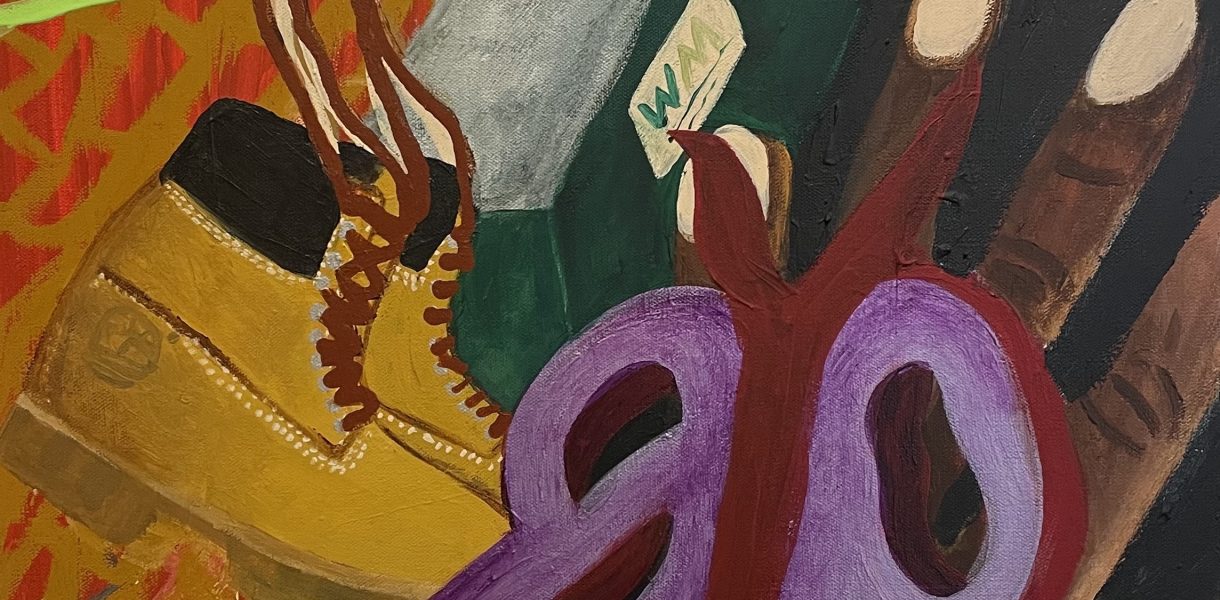By Malcolm Ryder
At the current 13-person Summer Show in the upstairs gallery of Oakland’s Archer Bicycle, painter Gaila Turner has a piece in which the pensive expression on a close up face is given in a very familiar gesture, but in a pictorial space that yells out what is missing as much as what is present.
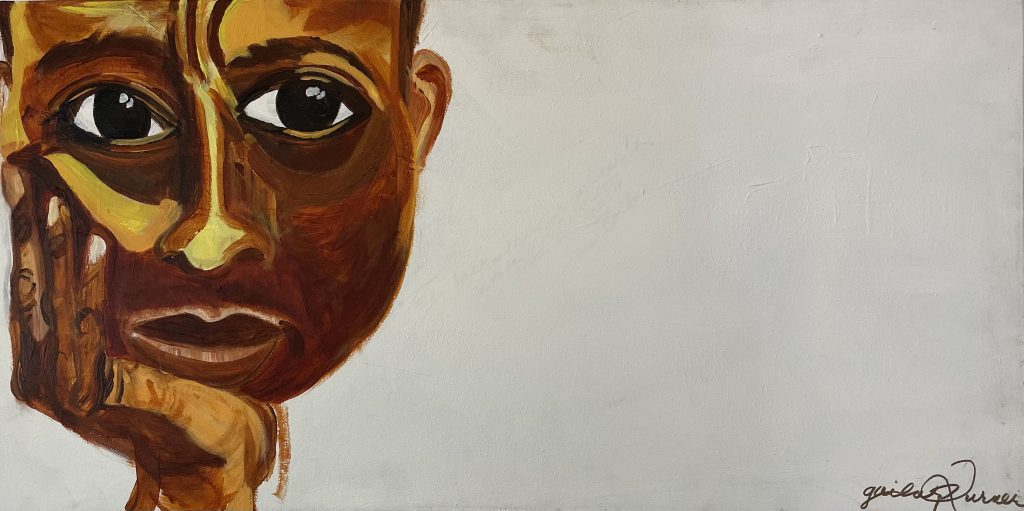
It is as if the head – a sort of portrait – is really an extract from a larger image; a close-up from either another painting or photograph that originally featured many people doing something in a room. The face belongs to someone named Baldwin, and we don’t know anything about this person, including whether it is a real person or an imagined one. The negative space then acts like a metaphor – the desire or feeling that Baldwin has in the moment. In the end, the whole piece is not necessarily about what Baldwin might be thinking; instead is it about how we personally, privately, experience time?
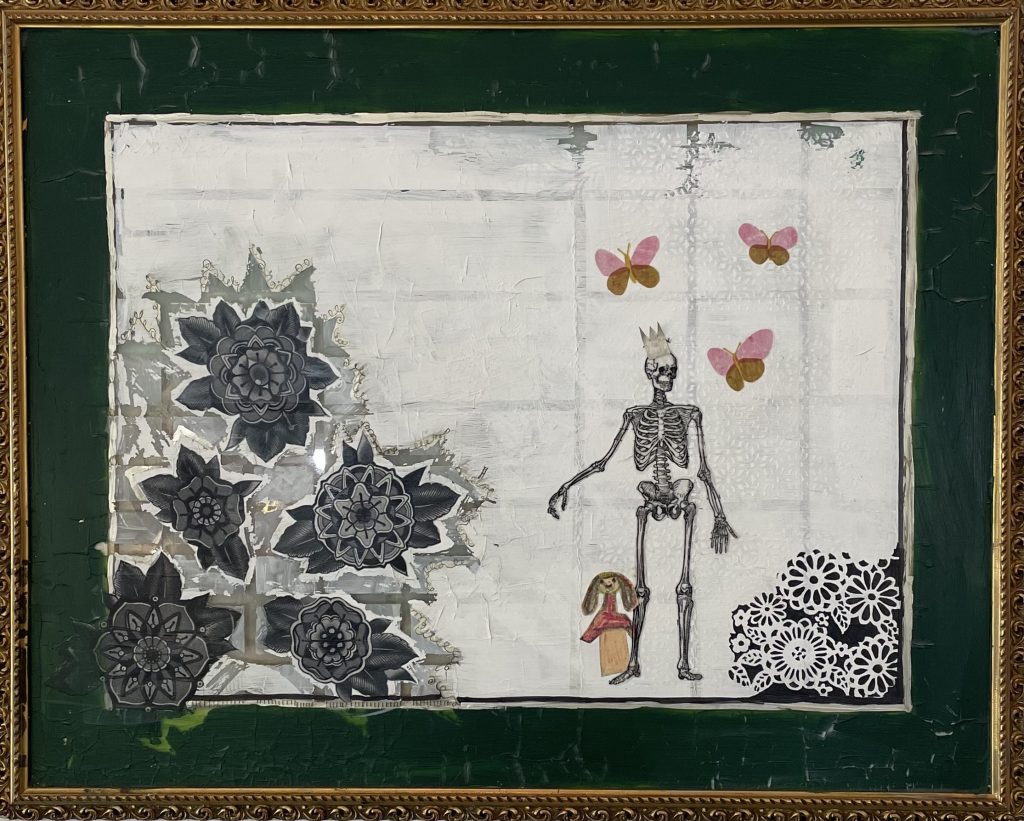
And the answer is… maybe. We read into the picture as actively as it tells us anything. A few steps later, we do the same thing but with entirely different cues. Jamie Weinstein makes (compared to Turner) intricate collages that visualize things in a layering of threatening surface information through which nostalgic backgrounds are noticed. The two layers denote different things separately but together they imply a story. We wind up being busy trying out narratives that we think might fit what we can see.
The Archer show has arranged the different artworks in a way that is not so obvious to do, except that it makes walking the narrow alley of the gallery’s mezzanine deck more entertaining; things change frequently from step to step. Yes, some visitors will prefer something different, such as groupings by stylistic similarity, or at least having each given artist’s works hung together instead of distributed here and there as they are. But the show is small enough to see everything multiple times and start finding your own dots that you want to connect.
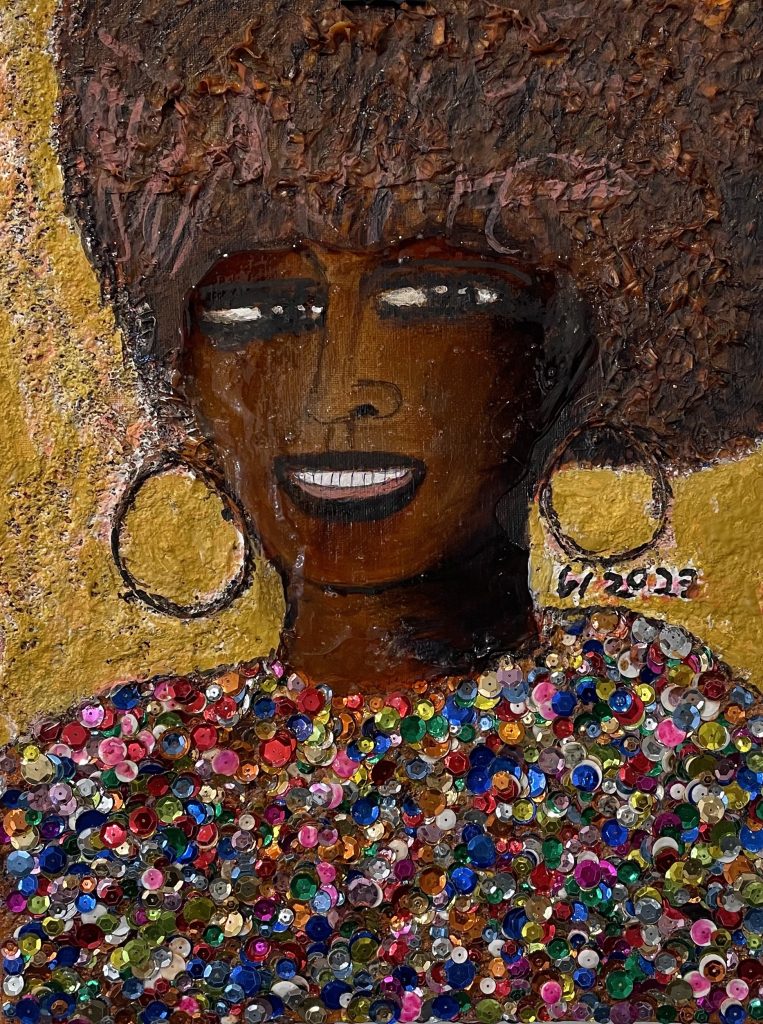
That said, there are stylistic affinities easily spotted. “Baldwin” has a color palette and bold strokes that also appear in mixed media portraits by Leon Kennedy, who shows glamorous views of Tina Turner and an anonymous lady happily dressed in white. Like Baldwin, both women have faces rendered in a way that looks quite a lot like carved wood dolls. Turner gives them a standard face that is reusable and typical across his figures, essentially a signature – but that makes his use of other distinguishing details stand out more. The women, who like Baldwin are Black, look great. They’re celebrating and they want us to celebrate them doing that.
Two photographers, the married artists Larry and Diane Coleman, are seen pursuing abstraction in entirely separate ways. His two pieces favor strong all-over pattern that rewards looking closely to find how detail is hidden in plain sight. She shows two pieces that feature fine variations of surface texture and light creating a modulation across the picture that controls their composition, making her graphic shapes and lines just serve them as scaffolding. Larry’s abstraction grows organically while Diane’s feels assembled.
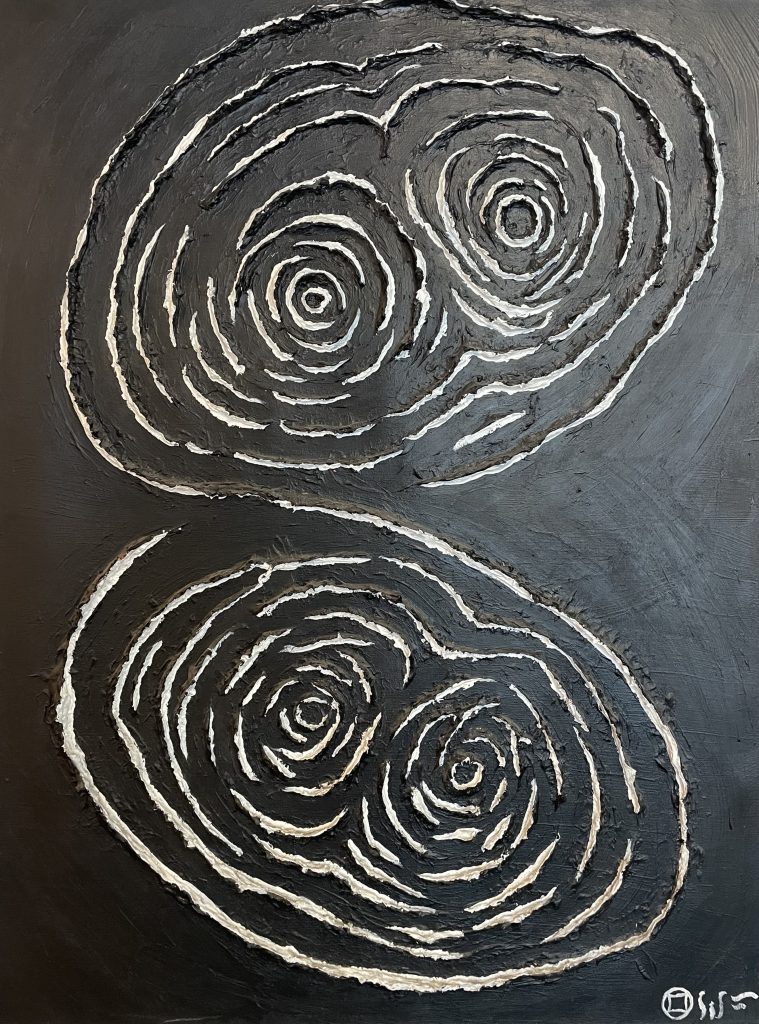
Other work in this show also gains from comparisons. In raw high-relief work from both Zeid and Fields, they each form spiral motifs that exploit the point where painting and sculpture become the same thing. But Zeid generates intimacy in viewing her piece, while Fields creates a sense of epic landscape scale. Juxtaposing them makes each of them more sharply felt.
Of course, the point of the show is really to survey and highlight the artists’ individual achievements.
Lazzlo’s painted tableaux of ordinary items that signal Black experience basically reformulate still life and gives the format more depth of meaning.
Nelson’s carefully etched objects, patterned all over, have the interesting effect where the complex outer surfaces of their material feel like what their insides may look like – as one might reveal when cutting into a tree trunk, a honeycomb, or some other latticework.
Dalit Fresco’s works are highly animated in the way her sensitive choice of each part’s qualities make us feel them coming together into a whole. They exemplify a way of cultivating beauty from the freedom of making something by hand. Each of her touches does something explicit, not suggestive; and I pondered how the results were both bold and quiet at the same time.
Arie Dallas shapes up a gentle surrealism from her evocation of a childlike memory. The simplicity of her paintings is at first deceptively cheerful but eventually suspenseful. That realization is a big part of what turns out to be their energy.
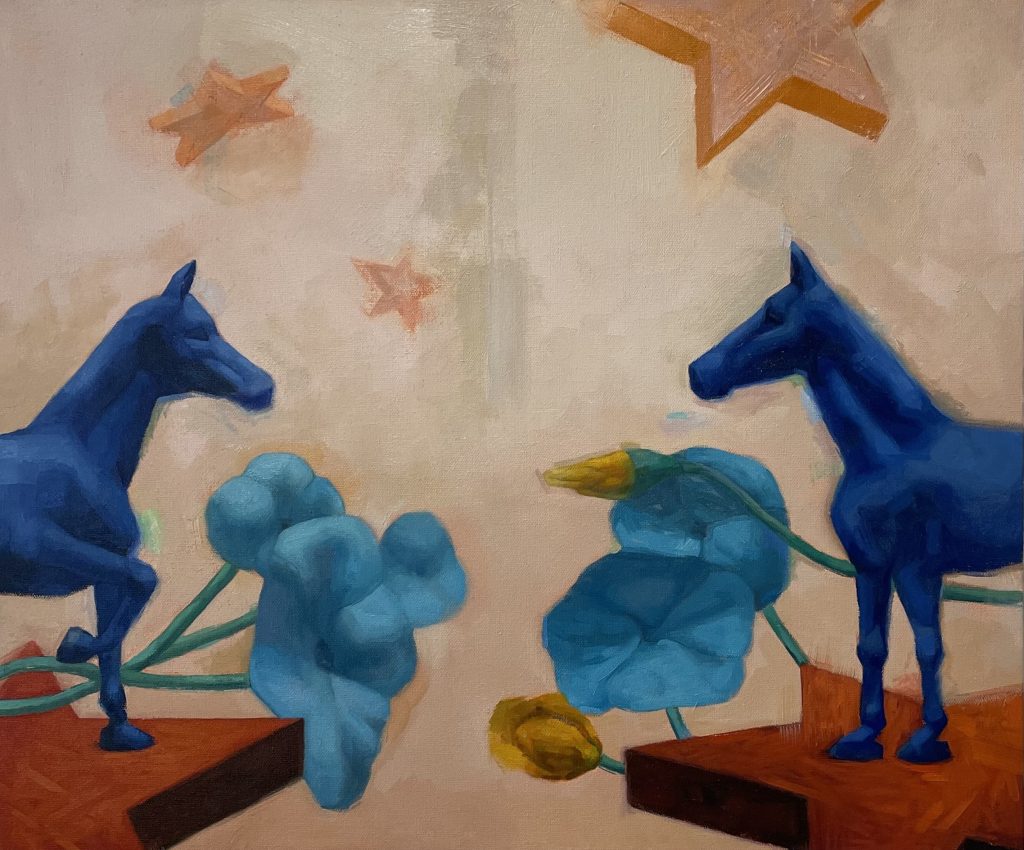
Knudsen, the comparative classicist in the show, brings technique that pointedly masters not subjects but paint. His two pictures manage to call on widely separated historical styles that show how a painter can transform seeing in different ways, but also reminds us that drawing and painting are intimately hitched.
Finally, Franklin’s monochromatic serial assemblies initially seem to aggressively deny interest in color; but what they then wind up doing is explaining a lot of what color relies on when it affects us. Additionally, their somewhat manufactured look can make us more sensitive to the built or designed surroundings in which they are displayed and take a moment to consider how we are being affected.
In a group showing like this one, the main goal is to have viewers get picky about what they are interested in. Naturally you will draw your own conclusions from a face-to-face visit with the variety of works, but no less important is the moment that a work makes the artist feel present there, too. When a work does that, it can be a game changer.
__________________________________________________________________________
Malcolm Ryder, Oakland resident and artist, is a fine arts and commercial photographer and writer with 40 years experience in practice creating, teaching, and critiquing visual art as well as developing and managing arts organizations for visual artists. He is a graduate of Princeton University; a former programming developer and director at the NEA, NYSCA and NYFA; and former board member of arts non-profits in SF and Berkeley. His current art work, exhibiting in shows across the Bay Area since June 2022, is also published online at www.malcolmryder.com and at the home site of the multi-year collaborative art project Oaktown, at www.oaktown.pictures.

